Have you guys tried mushroom soil yet?? I live very close to (and actually lived in the mushroom capital) mushroom farms. They throw away the soil after a few grows in the houses. The mushroom soil is sterilized before the mushrooms get grown in them. Then that soil gets turned into compost. I've been using it for probably 30+ years in my outdoor organic garden but haven't tried it for cannabis yet. It's sometimes pretty HOT - heavy in nutes since its mainly horse manure but composted some. Actually I did an accidental outdoor grow in it and results were excellent. Reason I ask and thought of it, since it's sterilized it gets rid of all the nasty critters that would decimate a mushroom colony. Is there some way we could "cook" our own composts to get rid of critters. Thats really the main reason I don't use my compost that I have outside - don't want to bring critters inside - already have plenty of the 4 legged versions dont want any more 6 legged critters inside. My compost bin has just about every nasty critter I don't want around my cannabis plants. All the once you folks talk about and more... (mice too). Maybe there's some cheap easy way to "cook" the compost get rid of critters and retain the good stuff for indoors???
Navigation
Install the app
How to install the app on iOS
How To Use Progressive Web App aka PWA On 420 Magazine Forum
Note: This feature may not be available in some browsers.
More options
You are using an out of date browser. It may not display this or other websites correctly.
You should upgrade or use an alternative browser.
You should upgrade or use an alternative browser.
COorganics - All Natural - No-Till With ACT's - Winter Attic Grow
- Thread starter COorganics
- Start date
- Thread starter
- #462
BB,
I haven't tried that soil, but, sterilized is a scary word to me. if its then composted though my gut says use it. I think any soil that grows a vegetable well will also grow cannabis well. it comes back to the myth that cannabis is some special, difficult plant that requires special treatment, above and beyond what vegetables need. that simply is not true.
re: compost, thermophilic compost is what your after my friend. at the thermo state the pile is so hot bugs, worms, etc wont survive. compost calculator is your friend here.
one can also solarize soil or compost as well, to kill bugs. solarizing will do more damage to pests than beneficial organisms, from my reading.
I haven't tried that soil, but, sterilized is a scary word to me. if its then composted though my gut says use it. I think any soil that grows a vegetable well will also grow cannabis well. it comes back to the myth that cannabis is some special, difficult plant that requires special treatment, above and beyond what vegetables need. that simply is not true.
re: compost, thermophilic compost is what your after my friend. at the thermo state the pile is so hot bugs, worms, etc wont survive. compost calculator is your friend here.
one can also solarize soil or compost as well, to kill bugs. solarizing will do more damage to pests than beneficial organisms, from my reading.
BB,
re: compost, thermophilic compost is what your after my friend. at the thermo state the pile is so hot bugs, worms, etc wont survive. compost calculator is your friend here.
one can also solarize soil or compost as well, to kill bugs. solarizing will do more damage to pests than beneficial organisms, from my reading.
Mushroom soil - it's filled with all kinds of goodness. I have a few friends that grow "exotic" mushrooms not the white button ones. So I know what they put into the mix. Here's a good read on it. You probably don't have this stuff local in CO tho but it's common here near me and in Oregon/Washington as well. This article talks about "stuff" that is added in. Not all mushroom houses do that, the only issue is that it can be hot so I let it sit over the winter in a pile and in the spring its ready to go. The folks I get it from even have different "aged" piles, I always go for the oldest. So yeah myceleium the roots of mushrooms are the building block of life (all life). You can buy this stuff in bags probably at your local box store for pretty cheap too.
My next grow I will try a plant or 2 in some I've had in a pile from this summer - no insects/critters at all, smells a little like horse poop tho.
Linky for this stuff - my local agricultural extension - this is what I use :
Using Spent Mushroom Substrate (mushroom soil) as a Soil Amendment to Improve Turf ? Center for Turfgrass Science ? Penn State University
- Thread starter
- #464
ah... mushroom soil = mushroom compost. they sell that bagged at the ace hardware here. I bought one once. I bet that stuff you can get locally is better than what I can get bagged.
thanks for the link. looks like you are sitting on a gold mine of organic matter, nice. with organics there isn't one perfect amendment or product for a given situation. A lot of in boils down to what you can get locally and sustainably. if I lived in your area I would fill my yard with that stuff they are throwing away and (as u said) use the oldest first.
what do you think of solarizing your outdoor compost and bringing it indoors for your plants?
thanks for the link. looks like you are sitting on a gold mine of organic matter, nice. with organics there isn't one perfect amendment or product for a given situation. A lot of in boils down to what you can get locally and sustainably. if I lived in your area I would fill my yard with that stuff they are throwing away and (as u said) use the oldest first.
what do you think of solarizing your outdoor compost and bringing it indoors for your plants?
- Thread starter
- #465
Gone fishin.
SmokesDaKush
New Member
My worm bin has the same mites you speak of (I freaked when I first saw them) but I think I have only used my casting for tea thus far, so I don't think I would have transferred any of the reddish/orange guys over yet. If the white ones aren't predatory that I will send in the army... They have been there for a bit and seem to be on patrol, doing no damage that I can see.
The worm business thought crossed my mind before but I'm not in a place to make that happen right now. Have fun!
My camo mulch on the CBD Critical Cure clone. It's normally a little bit heavier.
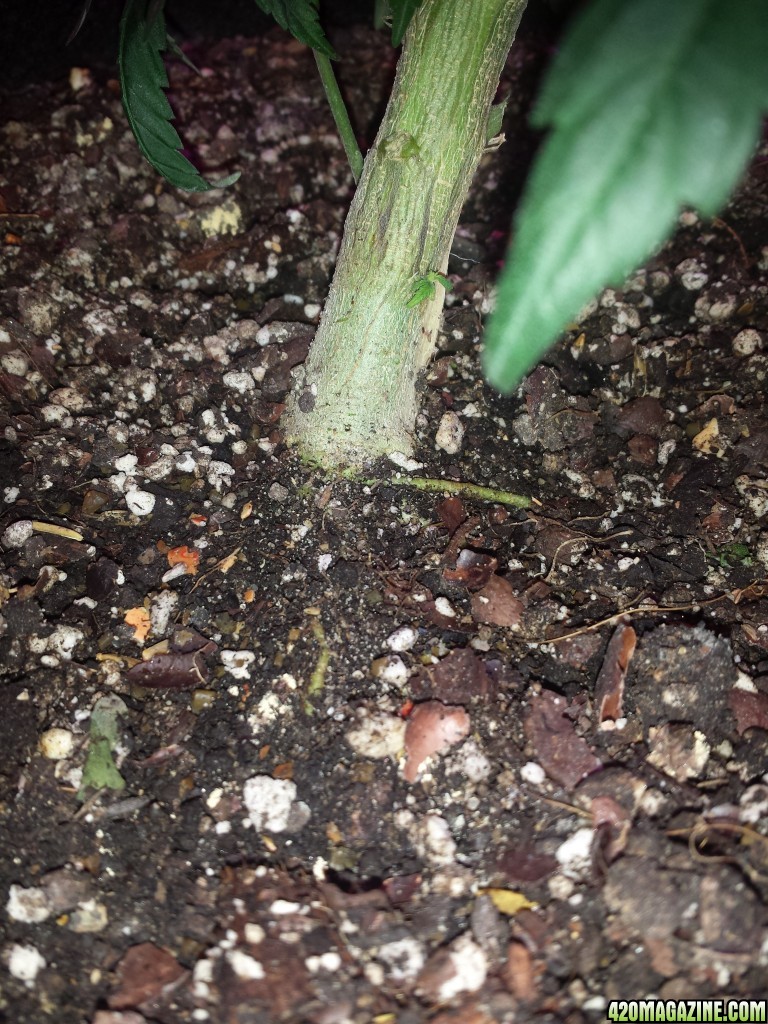
The worm business thought crossed my mind before but I'm not in a place to make that happen right now. Have fun!
My camo mulch on the CBD Critical Cure clone. It's normally a little bit heavier.

Yes, plants under LEDs need extra Cal/Mag but from personal experience I can only verify this for Bloom. I still use CFLs for Veg.Oh a question perhaps someone can answer. I recently switched my veg room from cfl to led and have read a few comments about needing more CA & MG then normal. How true does this hold as this could be exaggerating my issues a bit as well.
Well Organics, when I started using organic soil a couple of months back I quit PHing. But I've started back only because of one reason; No issues or anything but figured why not? It won't hurt. If anything it'll only help. But your right, from what I've witnessed in my own grow it's unnecessary.Soil pH Kits - How Doing A pH Test May Be Hurting Your Garden
no one growing organically is ph'ing anything after they get a grasp on whats going on with the SFW, unless they are doing some kind of scientific testing. PH isn't in my vocabulary as I'm just a gardener, not a scientist.
I thought the same thing when I read it dude. First I read, wetting agent.
The second thing I read it is SOAP!
The second thing I read it is SOAP!
just for fun (I love all my free time this time of year),
Lets look at an Advanced Nutrients organic bottled product. its likely people who follow this journal are not using any advanced nutrients products, but nonetheless this is informative.

sexy cartoon, right? and it says organic, so what the hell does it do?
"Product Information
Wet Betty Organic is the worlds superior non-ionic surfactant. Our research scientists tested organic surfactants to find the ones that would best transport nutrients into your plants. Wet Bettys proprietary 100% organic surfactants deliver nutrients, hormones and bio-catalytic agents directly to leaves and roots for immediate use by plants. Multiple, organic transfectants were blended to create this unique growth-enhancing formula. Wet Betty Organic contains naturally-occurring steroidal and triterpenoid saponins derived from Yucca and Quillaja, which are deserts plant known to contain many compounds that benefit plants and humans. These saponins help plants resist stress, manufacture phytohormones, and deliver larger harvests. Yucca and Quillaja extracts deter the development of root knot nematodes and other harmful fungi. Wet Betty Organic includes aromatic terpenoids that contribute to nicer taste and aroma. Some people believe surfactant products are only useful for foliar feeding, but they are also useful in the root zone, where they lower the surface tension of root media such as soil and sphagnum moss so root media and roots can better absorb water and nutrients. If youre an organic grower trying to get the biggest bang for every buck you spend on agricultural supplies, Wet Betty Organic is the slickest way to get more into (and out of) your plants.
Ingredients:
-Saponin
-Yucca Extract"
(I added the bold myself to draw attn: to that last sentence)
copied from greners.com
OK, so its a wetting agent that uses yucca and quillaja in some kind of liquid solution for their saponin content.
from MSDS:
"SECTION 2. COMPOSITION/INFORMATION OF INGREDIENTS Ingredients: The chemical identity of the compounds and the exact proportions used in the mixture are a proprietary trade secret and are believed to be non-toxic."
price of wet betty 27$/quart +shipping.
I know another source of saponins. Uhhh... Aloe. fresh, powdered, however you take it, aloe is amazing. LOL, its like natures Wet Betty, only better.
aloe is useful for its saponin content as a "wetting agent" but its uses go far beyond that. aloe is loaded with enzymes, amino acids and secondary metabolites. this quote from buildasoil re: aloe is good "Remember! Aloe has Salicylic acid. Salicylic acid is involved in local and systemic plant defense responses against pathogens. It plays a role during stresses such as drought, chilling, heavy metal toxicity, heat, and osmotic stress. SA can volatilize and warn neighboring plants of attack." furthermore, aloe has a wide range of nutrients, and it also contains growth hormones and natural rooting compounds. Here's a coot quote re: aloe " Aloe Vera: contains Salicylic acid is a plant compound which has been used as a rooting agent for over 120 years in the nursery industry. This is the compound that's found in Willow trees which you might have run across in posts on rooting a cutting. This plant material is also very high in Saponins (30,000 ppm) and this adds another level of benefits."
badass stuff.
buy an aloe plant today, have a healthier garden tomorrow. sorry wet betty.
oh yeah, the natives used Yucca as a fish poison lol
this is an antifungal, bad for TLO bro.
this is an antifungal, bad for TLO bro.
SmokesDaKush
New Member
It's my first experience with a led so I do appreciate it.
When used as a ACT/AVT but it's also in the soil mix with various ammendments as well.
Yes, plants under LEDs need extra Cal/Mag but from personal experience I can only verify this for Bloom. I still use CFLs for Veg.
Well Organics, when I started using organic soil a couple of months back I quit PHing. But I've started back only because of one reason; No issues or anything but figured why not? It won't hurt. If anything it'll only help. But your right, from what I've witnessed in my own grow it's unnecessary.
When used as a ACT/AVT but it's also in the soil mix with various ammendments as well.
Worm castings for fertilizer?
- Thread starter
- #472
Back home will do a garden update soon, my wife says it's looking big and nice. I love taking days off of checking on it and then scoping out the flower room.
- Thread starter
- #473
Worm castings for fertilizer?
Yessir!
Best to make your own, spend the coin for premo castings in the mean time.
- Thread starter
- #474
Garden looks great, got to get off my lazy ass soon and hook carbon filter back up. It's reeking ganja in my yard all around the house. I never hooked it back up after new light configuration. Smells like it's high time. 
Some pics from tonight:
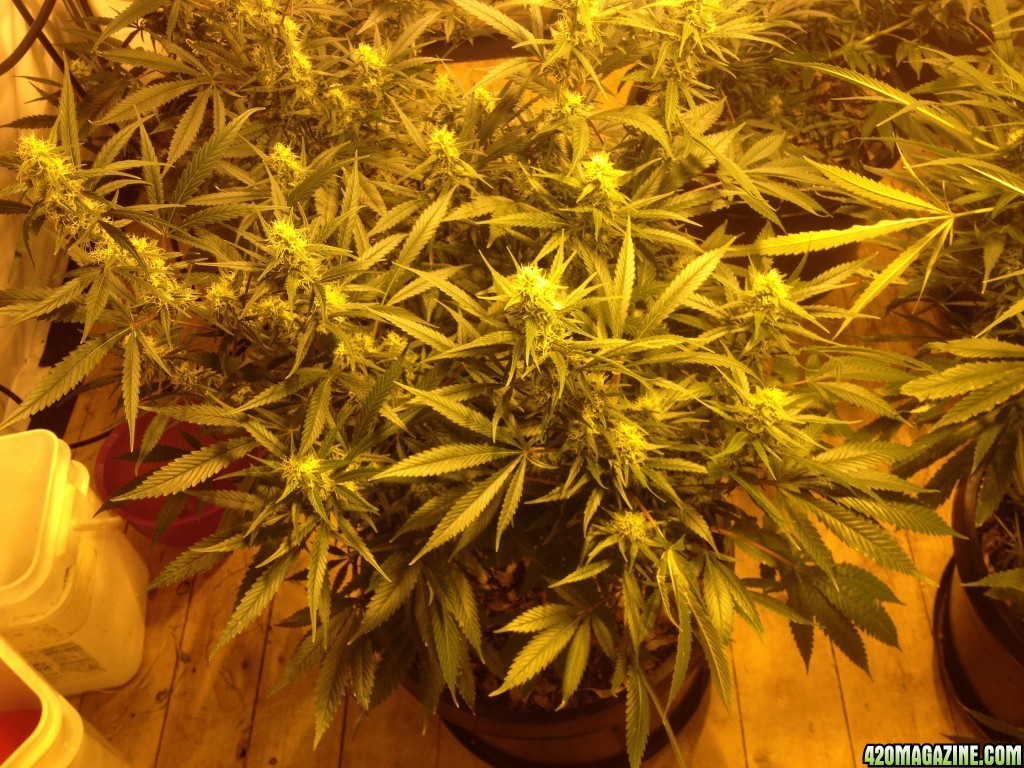
Here is the big jack herer
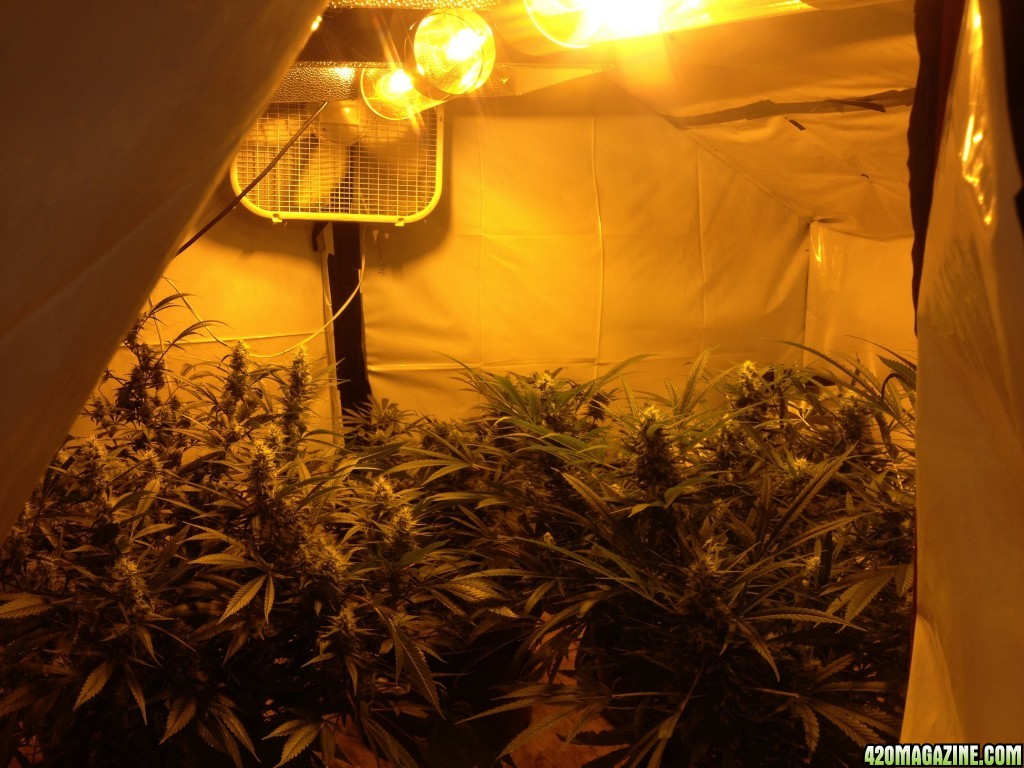
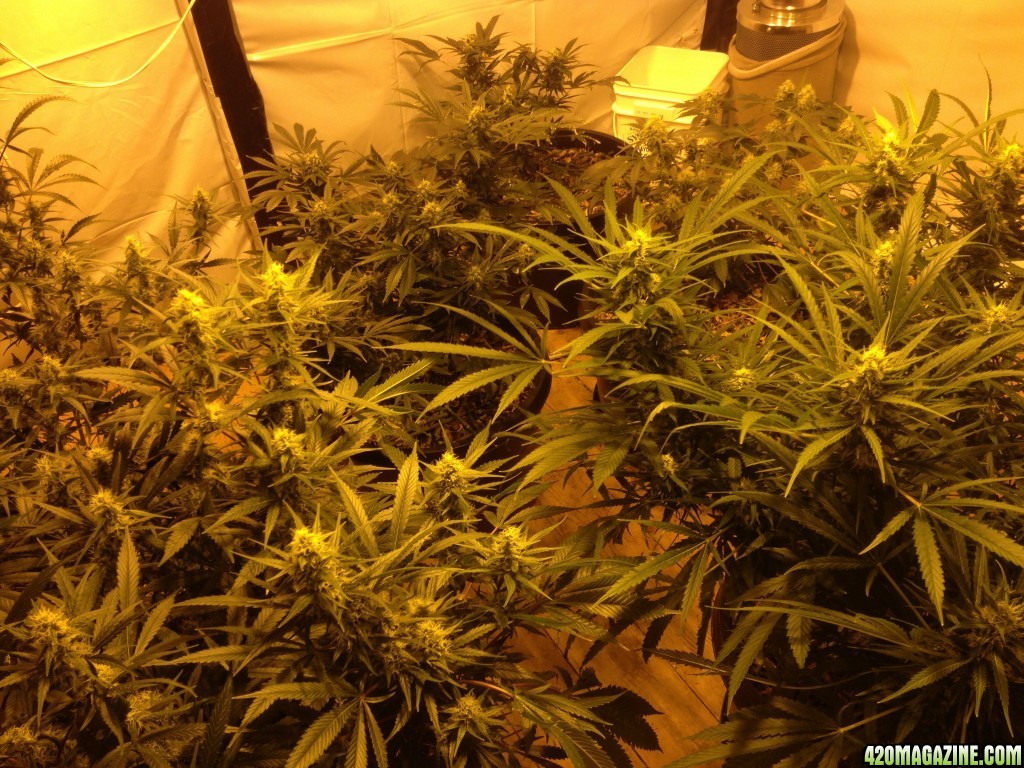
Room shots
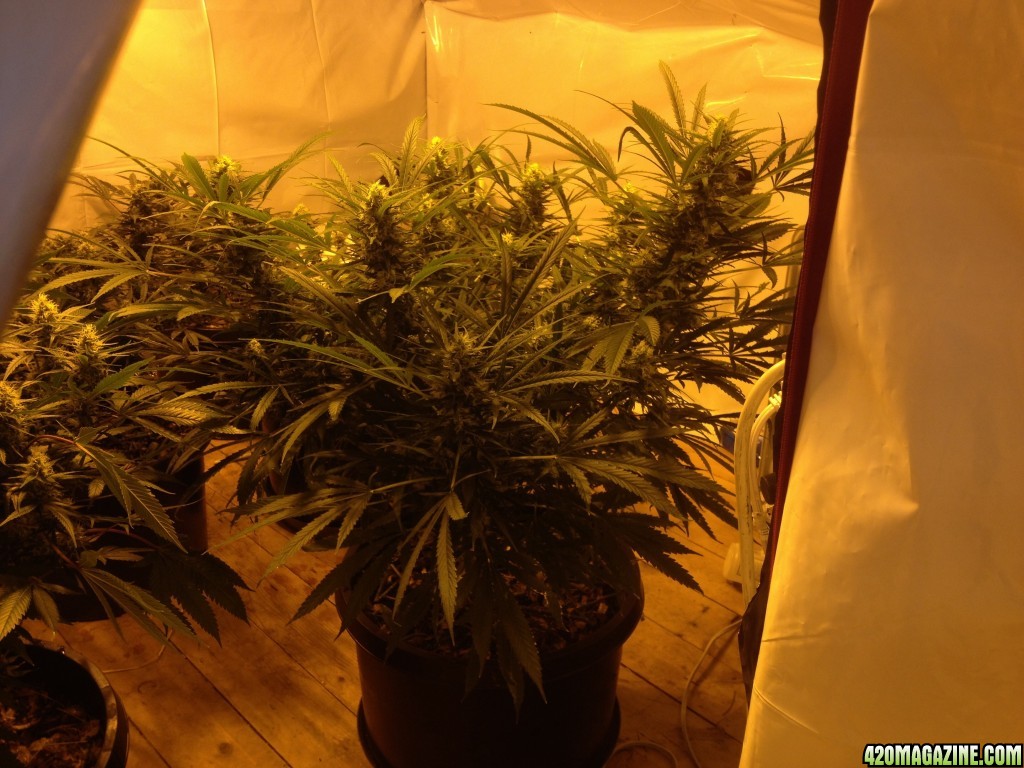
WT "b" sativa pheno
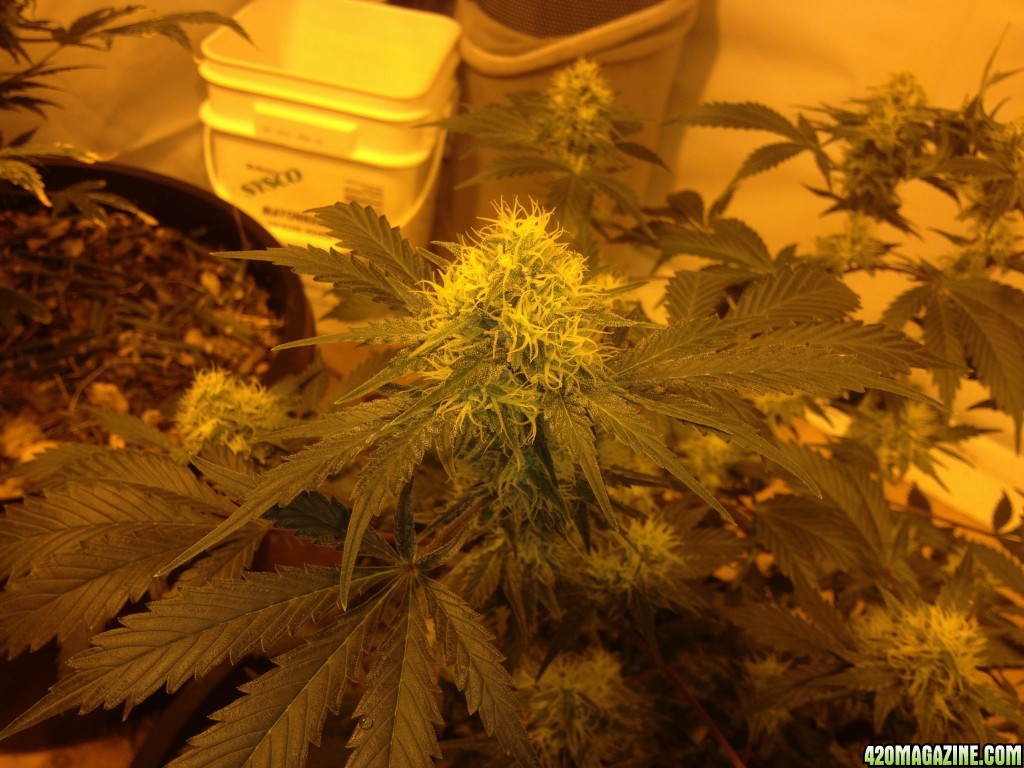
Bubblegum dankness, bummer I only flowered one small one of these this time
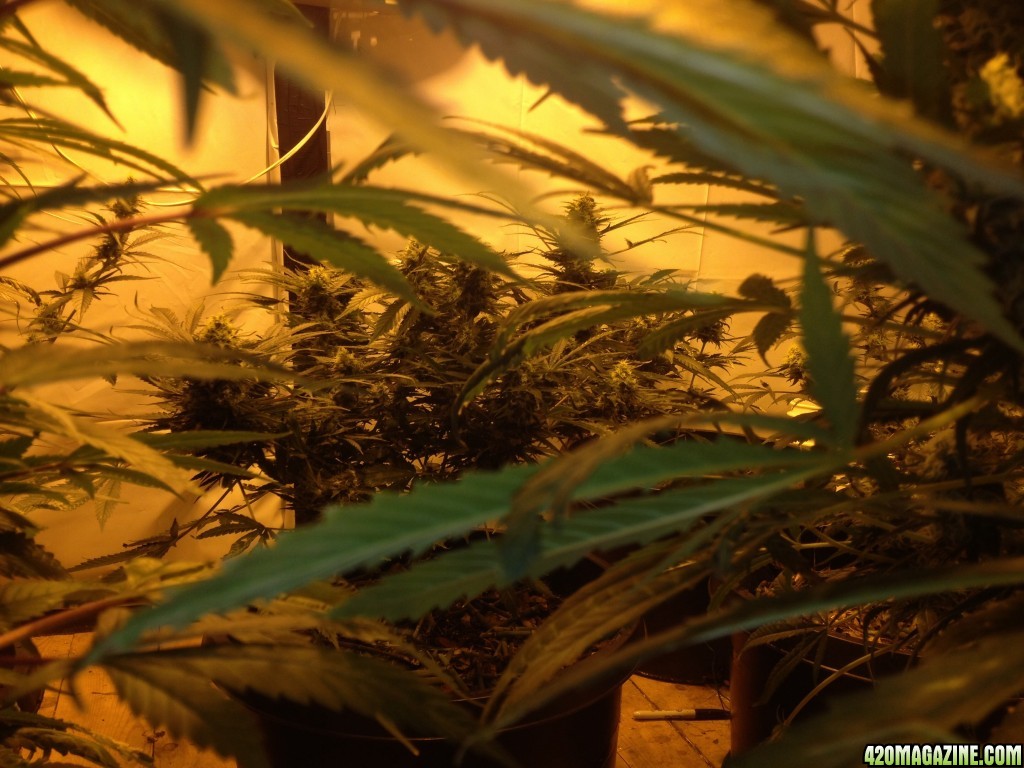
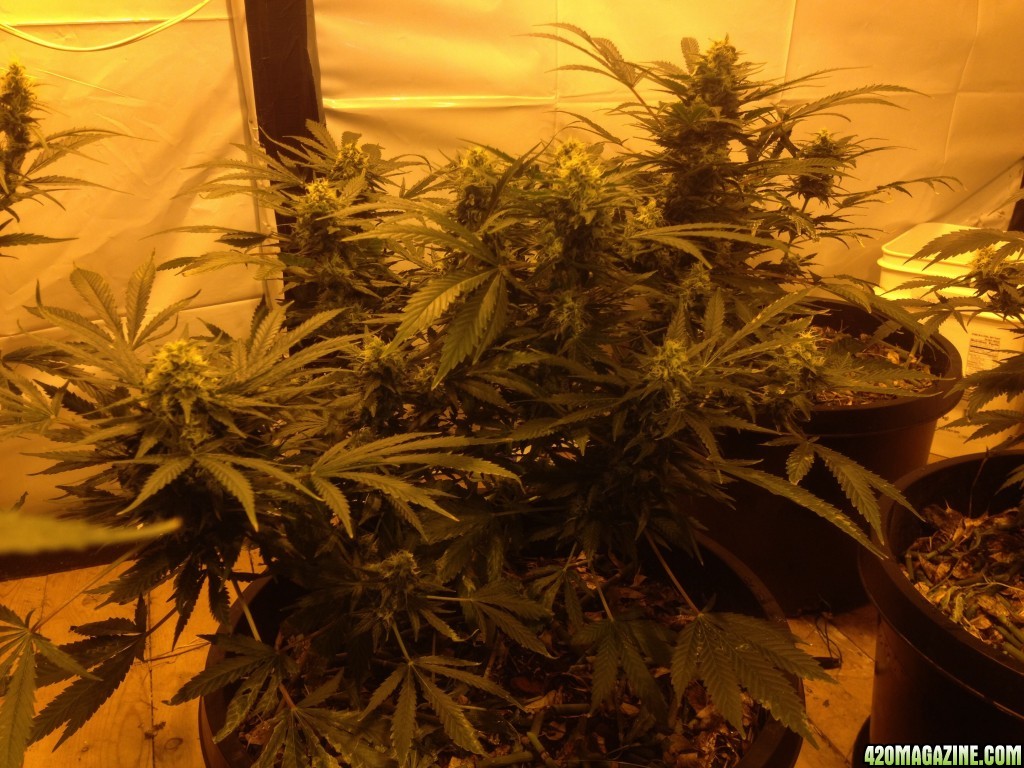
WT "a" indy pheno
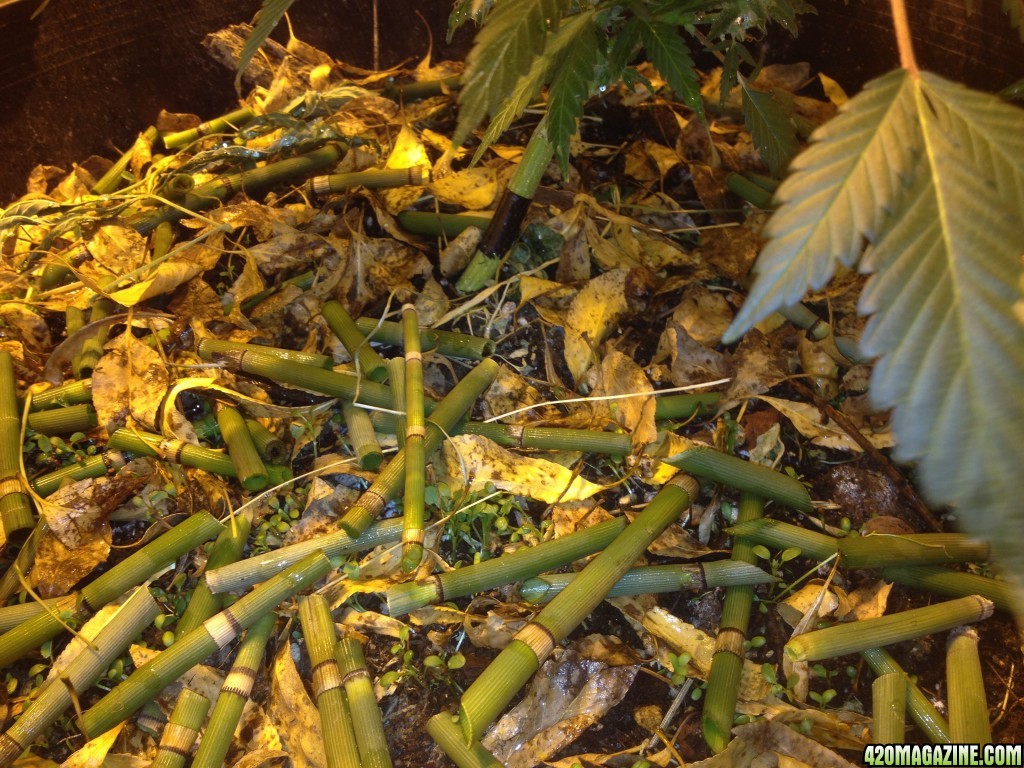
New forest floor emerging after aphid combat

Some pics from tonight:

Here is the big jack herer


Room shots

WT "b" sativa pheno

Bubblegum dankness, bummer I only flowered one small one of these this time


WT "a" indy pheno

New forest floor emerging after aphid combat
- Thread starter
- #475
Clones took a hit while I was gone. Will see what bounces back after water soon. I could try to reveg some, but I'd kinda like to start with fresh genetics when we get the new house. Pheno hunting with some old school lines sounds like fun. Looking at WT "a" pheno though I think I want the clone to come back so I can run a few of those in near future. It's thick and stinky! Weed is a weed so I bet I see them all bounce back anyway.


I haven't even been able to get my own grow up yet, what with the surprise open heart bypass scheduled for my beloved on Tuesday, but I look at those pictures and think "gees, what I could grow in that space". Envy, baby - pure envy.
I trust you had an excellent time in the wild. Welcome back.
Everything looks good in there CO. We were perusing the photos and suddenly Dale stopped and enquired about the beautiful equisetum you have scattered in the mulch. We have an affinity for it, since it's so obviously closely related to the fossil record we refer to as calamities. We used to work as curatorial assistants in the plant fossil department of a major museum. Those were excellent times. Some of our best memories are tied to that incredible work. We essentially created a more effective storage system for a neglected but scientifically important collection of specimens, many of which were of the Carboniferous Era, so we've held many examples of calamities. You should see our apartment. There are fossil specimens displayed all through the space.
May I ask, did you purchase or collect this treasure trove? There's a small zen garden outside the front entrance of the hospital that's treating my husband and I'm always tempted to snip a few stalks of their equisetum for my future mulch. I would do a selective harvest - just a tiny bit every day. He'll be there for up to two weeks starting Tuesday, so I'll have plenty of opportunity. No one would even notice and it may stimulate additional growth. Hmmmm, a plan emerges.
Susan
I trust you had an excellent time in the wild. Welcome back.
Everything looks good in there CO. We were perusing the photos and suddenly Dale stopped and enquired about the beautiful equisetum you have scattered in the mulch. We have an affinity for it, since it's so obviously closely related to the fossil record we refer to as calamities. We used to work as curatorial assistants in the plant fossil department of a major museum. Those were excellent times. Some of our best memories are tied to that incredible work. We essentially created a more effective storage system for a neglected but scientifically important collection of specimens, many of which were of the Carboniferous Era, so we've held many examples of calamities. You should see our apartment. There are fossil specimens displayed all through the space.

May I ask, did you purchase or collect this treasure trove? There's a small zen garden outside the front entrance of the hospital that's treating my husband and I'm always tempted to snip a few stalks of their equisetum for my future mulch. I would do a selective harvest - just a tiny bit every day. He'll be there for up to two weeks starting Tuesday, so I'll have plenty of opportunity. No one would even notice and it may stimulate additional growth. Hmmmm, a plan emerges.
Susan

Why the fondness for Bubblegum? I'm new to the field. Up until very recently I was completely unaware that there were different strains available, much less that one could grow their own and get superior cannabis in the end. I feel like a babe in the woods sometimes as I read these journals. This is a whole new world to me.
Worm castings for fertilizer?
Resist the urge to go cheap or accept poor quality but easily available (unless you are equipped to amend with additives, and that's somewhat of an advanced technique). As limited as my budget was for my own grow, I wisely invested in high quality vermicompost. I had to get it online, but it was worth every penny. Then I started my own worm bin to control the quality and have vermicompost instead of just worm castings.
Cannabis will grow if you plant in a Dixie cup with MiracleGro, sitting on a window sill. It won't be more than a decorative plant, but this vigorous species is programmed to survive. We, as farmers, take the work a bit more seriously than that and are caught up in the joys of cultivation and watching the plants thrive, much as parents do with their offspring. It's a funny thing. It caught me completely by surprise.
I miss the smell of flowering. These photos bring the memories flooding back. Such beautifully structured leaves, CO. I see my future in every shot.
Three posts here already. It was a long week in the hospital. At times it felt like withdrawal to be denied access to this site by the hospital's wifi.
- Thread starter
- #479
hey sue,
I think what I have in the mulch there is a kind of horsetail. I think..., we always called it "snakegrass" growing up. I find it on the riverbanks and if I have my plant right, its a dynamic accumulator and a great source of silica (and everything else) as it breaks down over time. Dynamic accumulator plants chopped and thrown into the mulch seems like a nice addition, with comfrey or whatever else, and of course some other mineral top dresses to keep the soil rich without "tilling" it, till kingdom come.
I like the smell, taste, and buzz off the bubblegum cut I have, and its very frosty and a fairly quick finisher. That's it.
I think what I have in the mulch there is a kind of horsetail. I think..., we always called it "snakegrass" growing up. I find it on the riverbanks and if I have my plant right, its a dynamic accumulator and a great source of silica (and everything else) as it breaks down over time. Dynamic accumulator plants chopped and thrown into the mulch seems like a nice addition, with comfrey or whatever else, and of course some other mineral top dresses to keep the soil rich without "tilling" it, till kingdom come.

I like the smell, taste, and buzz off the bubblegum cut I have, and its very frosty and a fairly quick finisher. That's it.

- Thread starter
- #480
oh, and thanks for the botany lesson.
googling "equisetum", I found that it is also called horsetail, snakegrass, and it reproduces by spores, not seeds. Interesting stuff. thanks. Im still calling it horsetail because i cant pronounce equisetum, ha haa.
googling "equisetum", I found that it is also called horsetail, snakegrass, and it reproduces by spores, not seeds. Interesting stuff. thanks. Im still calling it horsetail because i cant pronounce equisetum, ha haa.
Similar threads
- Replies
- 497
- Views
- 33K
- Replies
- 165
- Views
- 15K
- Replies
- 479
- Views
- 31K
- Replies
- 14
- Views
- 2K
- Replies
- 819
- Views
- 52K


